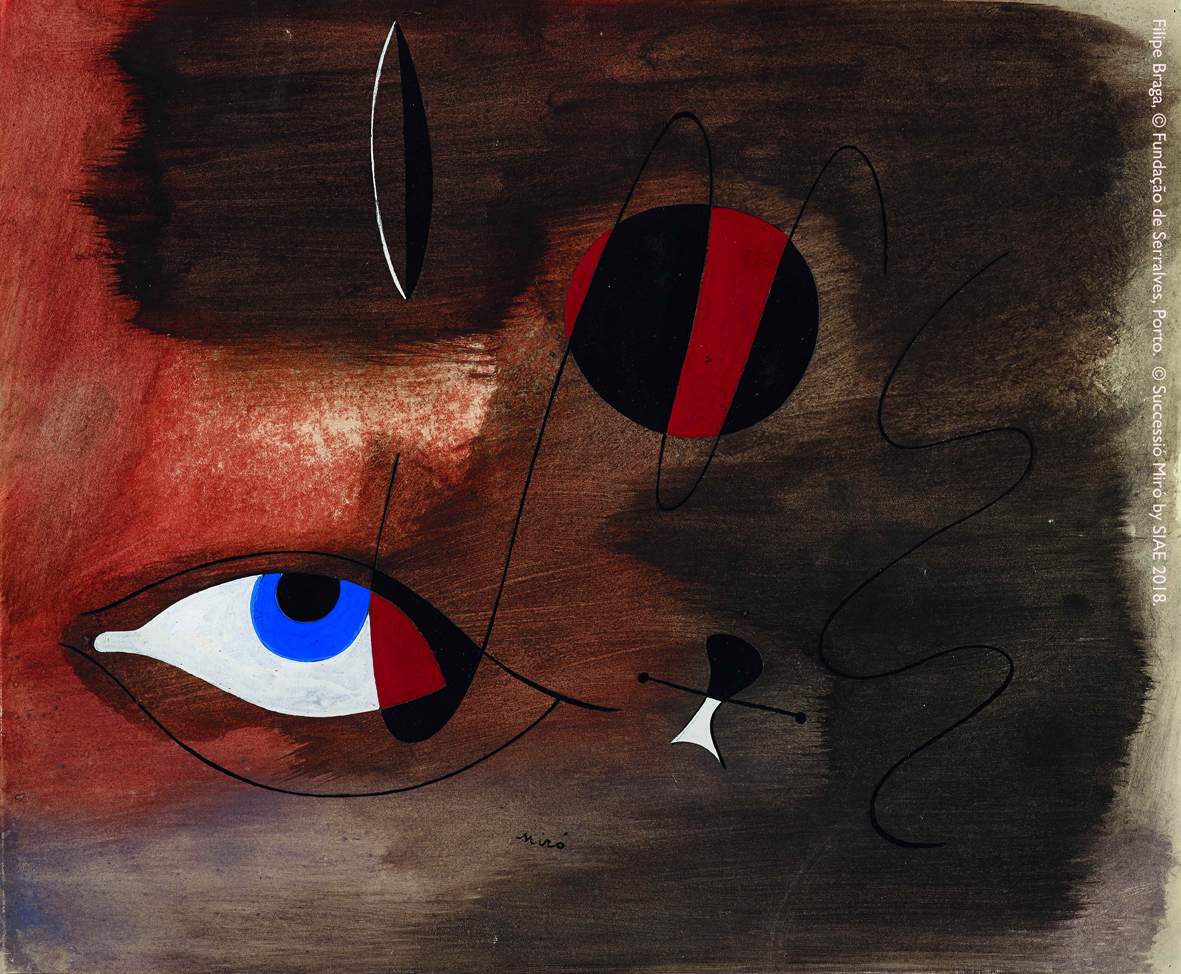Joan Miró's works never before released from Portugal on display in Padua
In Padua, the genius of Joan Miró (Barcelona, 1893 - Palma de Mallorca, 1983) is the protagonist of the exhibition Joan Miró. Materiality and Metamorphosis scheduled at Palazzo Zabarella from March 10 to July 22, 2018. The exhibition, organized by Fundação de Serralves - Museu de Arte Contemporânea Porto, Fondazione Bano and the Municipality of Padua, showcases the important Miró Collection preserved in Porto (Portugal) and owned by the Portuguese state: this is the first time that these works, eighty-five paintings, drawings, sculpture, collages and tapestries, have left Portugal. The exhibition aims to delve into the pictorial languages Miró developed from the first half of the 1920s, documenting the transformations of his style and technique: the exhibition promises to highlight Miró’s visual thinking, the way he was able to work with all the senses, and the elaboration processes behind his masterpieces.
The works on display cover a span of Miró’s career from 1924 to 1981, although the exhibition, curated by Robert Lubar Messeri, focuses mainly on works from the 1920s, documenting the metamorphoses of the artist’s style and the importance Miró was able to accord to materiality, the basis of his artistic practice. The relationship between medium and technique always influenced all his production, and there were many different media that the painter used in the seventy years of his artistic activity: canvas (whether or not mounted on a frame, and also torn, worn, perforated), wallpaper, parchment, wood, cardboard, glass, sandpaper, jute, cork, sheepskin, fiber cement, brass, chipboard, Cellotex, copper, aluminum foil, and tar paper. And of course the materials were also the most varied: oil, acrylic paints, chalks, pastels, Conté pencils, graphite, egg tempera, gouache, watercolor, enamel paint, India ink, collage, stencils and dacalcomanias. The results were always surprising. “In a process of morphological transformation, in Miró’s art objects rise to the status of visual signs,” the curator writes. “In tapestries, skeins of thread can replace splashes of color; the wire in early collages often represents the drawn line; sometimes the paper reformulates the physical characteristics of the canvas as a support. In a very broad sense, morphology is the operating principle of Miró’s work: everything is in a state of permanent flux and change as the artist explores possible equivalences between mediums. But although morphology is defined as a variation of physical form, substance, and structure, it is nevertheless not in science or biology that the interpretive key to Miró’s art should be sought, but in the transformation and internal logic of his working methods. In the dual role of artificer and transgressor of the form of twentieth-century modernism - painter and anti-painter at the same time - Miró challenged the very concept of specificity of the medium.”
All the works in the Portuguese collection were acquired between 2004 and 2006 by Banco Português de Negociós, which acquired them from a Japanese private collection. Following the nationalization of Banco Português de Negociós in 2008, the collection was put on the market to address the Portuguese state’s economic difficulties. They then ended up at auction at Christie’s, but an outcry arose that made the works remain in Portugal. They were then exhibited to the public for the first time at the Serralves Museum between October 2016 and June 2017, in an exhibition that was visited by more than 240,000 people and testified to the keen interest in the collection, which was later also displayed at the Ajuda National Palace in Lisbon.
The exhibition at Palazzo Zabarella opens Tuesday through Sunday from 9:30 a.m. to 7 p.m. (ticket office closes at 6:15 p.m.). Closed Mondays, special openings April 1, 2, 25 and 30, May 1, June 2. Tickets: full price 13 euros, reduced 11 (for over 65s, 18-25 year olds, disabled), reduced kids 7 (for 6-17 year olds), free for children up to 5 years old and accompanying disabled persons. Open ticket (no need to block time slot and date) 16 euros. Groups between 15 and 25 people (with mandatory presale 1.50 euros): 11 euros adults, 6 euros schools. Info at www.zabarella.it.
Pictured: Joan Miró, Apparitions (1935; gouache and India ink on paper, 30.5 x 37 cm; Filipe Braga, © Fundação de Serralves, Porto) © Successió Miró by SIAE 2018
 |
| Joan Miró's works never before released from Portugal on display in Padua |
Warning: the translation into English of the original Italian article was created using automatic tools. We undertake to review all articles, but we do not guarantee the total absence of inaccuracies in the translation due to the program. You can find the original by clicking on the ITA button. If you find any mistake,please contact us.



























